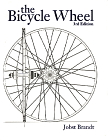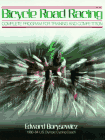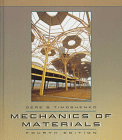| Recommended Reading by Damon Rinard |
In association with Amazon.com.
|
|

|
Tweet
Follow @sheldonbrowncom |

Competition Car
Composites,
by Simon McBeath, © 2000.
An excellent, practical book, teaching how to use composites in the home workshop without getting into heavy math. Emminently practical and helpful, written in an informal style that is easy to read, without glossing over the useful details that make a home project turn out so much better that it might have done without such advice. "Fools you are who say you like to learn from your mistakes. I prefer to learn from the mistakes of others, and avoid the cost of my own." -Otto von Bismarck. Chapters entitled Materials, Equipment and basic techniques, Pattern making, Making moulds, Component manufacture, Material upgrades, Technology upgrades, Pre-pregs, The professionals, Motorsport applications.

The Bicycle Wheel, by Jobst Brandt.
An excellent, concise explanation of how bicycle wheels work, how to build them, and how to maintain them. Jobst makes every word count. You may read this book again every year, and each time get more out of it. Thorough appendices include finite-element analysis calculations and results, a spoke length formula, etc.
![]()
![]()

Bicycling Science, by David Gordon Wilson.
A basic overview of the science and technology of bicycles and human power. Contains useful information on human power production, retarding forces on bikes, steering and handling, various frame materials, etc. (This is the third edition; Rinard reviewed the second.)

Bicycle Road Racing, by
Edward "Eddy B" Borysewicz.
In spite of being little old by now (published in 1986), this book is still quite useful as a training guide. Naturally I liked the chapter on Time Trials, since that is where the trick equipment is discussed. As out-of-date as many believe Eddy's bible is, I always hear bit of his wisdom reflected in each new training theory that comes out.

High-Tech Cycling, edited by Edmund R.
Burke.
I found chapter 1, "Selecting Cycling Equipment", by Dr. Chester Kyle the most interesting. There he gives, among other juicy tidbits, a force balance equation describing a bicycle's motion. It is quite an eye opener, because it shows all the retarding forces acting to slow a bicycle rider, and quantifies each one's contribution. That makes it clear exactly what is limiting the rider's top speed, whether it is rolling resistance in the tires, friction in the chain and bearings, or aerodynamic drag of the rider or components.
![]()
![]()

Mechanics of Materials, by Gere &
Timoshenko.
How can I calculate the stiffness of the frame?
Ah, that's not easy. Computer finite element analysis might be the easiest way to get a good answer without actually building and measuring the stiffness of a frame. But carefully choosing a few critical calculations to perform by hand might give you a pretty close idea. You can find the formulae in a good mechanics of materials text book like the one by Gere & Timoshenko. It is usually part of the Sophomore year undergraduate engineering curriculum. I wish it were easier!

No Hands: The Rise and Fall of the Schwinn Bicycle
Company, an American Institution, by Judith Crown & Glenn Coleman.
I like a good technical bike book. This one is not technical in the least. But even though there is a lot in it about the business side of the bicycle industry, I had a hard time putting this book down. It reveals a lot about the Schwinn Bicycle Company's problems, but also discusses Kestrel, Giant, Trek, Diamond Back, Specialized, early MTBs like Fisher and Ritchey, etc. Quotes leaders of these companies, too.

Bicycles and Tricycles : An Elementary Treatise on Their
Design and Construction, by
Archibald Sharp.
Unfortunately, Bicycles and Tricycles is now out of print again. Surprisingly complete treatment of various frame layouts, tubing profiles, even tooth-form theory are covered.
Copyright © 1995-2001
![]()
![]()
Last Updated: by Harriet Fell